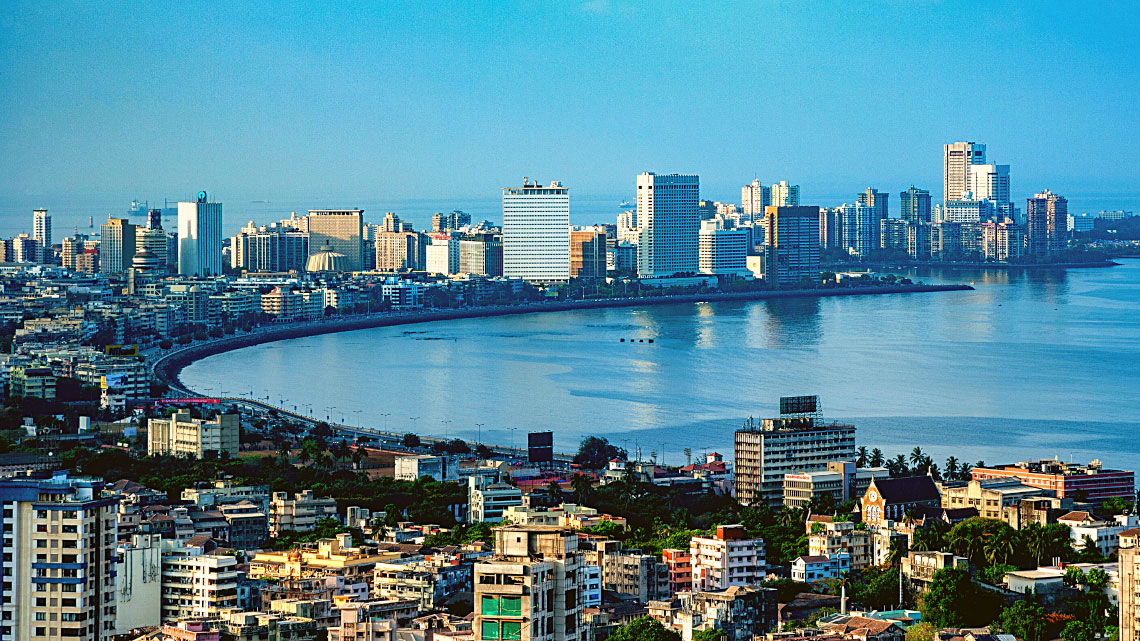Key Messages >>>
- Exposure to the impacts of climate hazards are expected to increase with growing population and rise in economic activities which based in coastal cities.
- Sea level rise, storm surges and waves are likely to induce major impact on coastal transport hubs and networks, including transient or permanent flooding of seaports and connecting coastal roads and rail lines. The Sea-level rise will inundate a very large number of low-lying areas and also led to intrusion of salt water inland which will have impact on freshwater and agriculture.
- Slums and informal settlements in coastal cities are built in low-lying areas that are flood-prone and geologically unstable. Consequently, extreme climate-induced hazards weaken the resilience and coping-capacities of already poor and vulnerable communities, raising socio-economic costs.
- The case of India clearly demonstrates the urgency for integrating climate change adaptation in coastal cities planning.
Introduction
This article seeks to draw the attention of the Indian populace at large, but most particularly that of India’s coastal communities and their governance structures, to the alarming and imminent challenge posed by climate-change-induced sea-level rise and extreme events. It also discusses how the most vulnerable and disadvantage section of the population is overlooked, and how the lack of fair equity in several dimensions of action and decision-making in terms of coastal adaptive measures ends-up reducing the adaptive capacity of coastal cities.
Economic Significance of Coastal Cities and Climate Change
On the one hand, coastlines in general are highly productive andcritical elements of any country as they provide a globally-connected ecosystem of goods and services, which is central to socio-cultural and economic development. On the other hand, they are areas that are highly risk-prone vis-à-vis climatic impact. Perhaps the most serious risk, and one that is growing much faster than predicted, involves the adverse impact of climate-change in its several manifestations. These include extreme climatic events such as flooding, drastic changes in the precipitation cycle, a sharp and sustained rise in sea-surface temperature, and, tropical revolving storms (TRS) that are, of late, demonstrating a marked increase in frequency-of-occurrence and in ferocity/intensity, but an equally marked decrease in path-predictability. The occurrence of such extreme weather events is affecting both natural ecosystems and human systems severely and adversely, with socio-economic productivity being correspondingly impacted. Moreover, coastal cities already stand exposed to high and multi-dimensional risks induced by climate-change-related sea-level rise. Coastal cities are also highly vulnerable to anthropogenic climate change and have the least capacity to adapt. Yet, exposure to the impacts of climate hazards are expected to increase with growing population and rise in economic activities which based in coastal cities.[i]
Insofar as India is concerned, the country’s coastline runs for some 7,516 kilometres (km) across nine states and four union territories (UTs) — two of the latter, namely, the Andaman and Nicobar island chain on the country’s eastern seaboard, and the Lakshadweep chain on the western one, being archipelagos.[ii] This coastline is home to roughly 170 million people and, not only is it one of the most densely populated regions in the world, it is also extremely vulnerable to a multiplicity of sea-based threats and hazards.[iii] The Indian coastline is studded by a number of human agglomerations, ranging from fishing hamlets and villages to megacities. Climate change and climate variability will produce an extremely complex web of interrelated and highly adverse impacts on all such human concentrations which will be most severely felt in large coastal cities. Table 1 depicts how the warming of the globe will impact regional climatic variations such as temperature change, precipitation, and sea-level rise, in India.
Table 1: Climate Change Projections for India based on Four General Circulation Model (GCMs) Output
| Year | Temperature Change (°C) | Precipitation Change (%) | Sea Level Rise (cm) | ||||
| Annual | Winter | Monsoon | Annual | Winter | Monsoon | ||
| 2020s | 1.36±0.19 | 1.61±0.16 | 1.13±0.43 | 2.9±3.7 | 2.7±17.7 | 2.9±3.7 | 4 to 8 |
| 2050s | 2.69±0.41 | 3.25±0.36 | 2.19±0.88 | 6.7±8.9 | -2.9±26.3 | 6.7±8.9 | 15 to 38 |
| 2080s | 3.84±0.76 | 4.52±0.49 | 3.19±1.42 | 11.0±12.3 | 5.3±34.4 | 11.0±12.3 | 46 to 59 |
Source: Based on Revi 2008[iv]
Sea-level Rise as a Threat
Major factors that contribute to sea-level rise are ocean thermal expansion, the melting of glaciers and icecaps, glacier-melt from the Greenland and Antarctic ice-sheets, and, to a smaller extent, the melting of snow on land and permafrost. The sea-surface temperature (SST) of the tropical Indian Ocean rose by 1° C on average during 1951–2015, which was markedly higher than the global average SST warming of 0.7° C, over the same period.[v] As a direct consequence, the sea-level rise experienced in the northern Indian Ocean, has accelerated to 3.3 mm per year between 1993-2017.[vi] This rate of sea-level rise will accelerate further with the rising mean temperature. Table 1 clearly depicts that increasing temperature and sea-level rise as projected by global climate models. For instance, in the 2050s, the sea-level rise is projected to increase from 4-8 cm to 15-38 when the temperature-rise of just 2° C. This sort of sea-level rise will inundate a very large number of low-lying areas and also led to intrusion of salt water inland which will have impact on freshwater and agriculture. It is likely to aggravate flood situations, erode beaches and further impact coastal settlements in terms of population-displacement from presently densely-populated areas. As per studies undertaken by The Energy Institute (TERI), a one-metre rise in sea level would displace approximately 7.1 million people within the coastal population, and place about 5,764 sq km of land at risk of getting submerged. Several coastal areas — with their constituent population amounting to some 200 million people — are projected to be below the high-tide line by 2100.[vii]
According to the Intergovernmental Panel on Climate Change (IPCC), climate models are consistent with the ocean temperature observations and indicate that thermal expansion will continue to contribute to sea-level rise over the next 100 years. Since deep-ocean temperatures change slowly, thermal expansion would continue for many centuries even if atmospheric concentrations of greenhouse gases were to be stabilized.[viii] Therefore, increasing temperatures and sea-level rise are likely to continue to be major risk factors for coastal cities in India, where one-third of the population is located. This regional temperature-rise, along with the changes being experienced in both, the global climate system and the Indian Ocean monsoon system, may lead to a mean increase in annual precipitation of 12.3 per cent by 2080, up from the 3.7 per cent change forecast for the 2020s.
Extreme events
In terms of precipitation related vulnerability, coastal flooding is a key area of concern. The Climate Central study on global vulnerability to sea-level rise and coastal flooding estimates that 36 million Indians are at risk of chronic flooding by 2050 and estimated that number will grow to 51 million Indians by 2100.[ix][x] It also predicted that extreme precipitation similar to the Mumbai floods in 2005 and Gujarat floods in 2006 could occur over other parts of the west coast in the absence of effective measures.[xi]
Cyclones and storm surges are very likely to be devastating for coastal mega-cities such as Mumbai, Chennai, Visakhapatnam, Surat, Bharuch, Bhavnagar and Jamnagar, apart from causing critical bottlenecks in important ports such as Kandla.[xii] It needs to be remembered that a storm surge, accompanied by coastal flooding and cyclonic winds, is the second most destructive after earthquake, rapid onset hazard in Gujarat. It accounts for 12 per cent of the risk to the state and a potential loss of over 11,000 lives for a probabilistic 100-year event.[xiii] Increased migration to the coast, drawn by huge investments in coastal infrastructure, settlements and enterprise would be disastrous as there are future risks involved, which have not been considered.
Another major big loss of climate change-induced changes on the coastal region is infrastructure, predominantly ports because India has 12 major and 205 notified minor and intermediate ports. Indian port operator handles significantly large number cargo movement and 95 per cent of the country’s trade by volume and 70 per cent by value is done through the ports.[xiv]“Sea level rise, storm surges and waves are likely to induce major impact on coastal transport hubs and networks, including transient or permanent flooding of seaports and connecting coastal roads and rail lines,” says a report by the United Nations Conference on Trade and Development.
Existential Threat to Coastal Communities
The ongoing-and-accelerating rise in sea level poses a clear, direct and imminent threat to the populations of each such coastal city, and adversely impacts their livelihoods, the city’s economy, its tourism, coastal infrastructure, and marine ecosystems. For instance, the degradation of coastal ecosystems, especially wetlands and coral reefs, has serious implications for the wellbeing of coastal communities that are largely dependent on the coastal ecosystem for goods and services. It is fairly obvious that coastal flooding caused or accompanied-by sea-level rise will cause serious degradation of drinking-water sources and supply-systems, fishery resources, and, lead to the inundation of low-lying areas, impacting millions of people, with unpredictable consequential fallouts as well such as conflicts over scarce resources.
A cause of considerable disquiet if not actual alarm is that even if Greenhouse Gas (GHG) emissions are stabilised in the near future, sea levels would continue to rise for many decades.[xv] The adverse impact of greenhouse gas emissions and the associated global warming would lead to irreversible devastation to the coastal cities, whose millions of economically-disadvantaged inhabitants, many of whom dwell in low-lying areas, are extremely vulnerable to the impact of anthropogenic climate induced hazards and also have least coping capacities. In many cases, these slums and informal settlements are built in low-lying areas that are flood-prone and geologically unstable. Hence, sea-level rise and extreme events due to climate change is likely to pose not just a serious socio-economic, environmental and security threat to these segments of the population, but rather, an existential one.
Need for Alternative Development Approaches
Clearly, sea-level rise, climate extremes and anthropogenic drivers of climate change constitute a serious challenge to India’s coastal cities. These challenges are aggravated by unsustainable development and rapid population growth, high-density but unplanned settlements, and, urban poverty with associated high-differentials in access to housing, public services and infrastructure. The impact of extreme climate-induced hazards further reduces the resilience and coping capacities of poor and vulnerable communities within these cities. At the same time, these hazards increase socio-economic costs vary significantly.[xvi] The impact of climate-change on coastal cities has strong strategic, economic and political repercussions, as well. Clearly, there is an urgent need to integrate climate change, developmental projects and population growth in climate adaptation and mitigation policy.
About the Author
Chime Youdon is an Associate Fellow and a ‘Vice Admiral KK Nayyar’ Fellow at the National Maritime Foundation. She is deeply engaged in a set of major studies relating to resilience-assessments of urban agglomerates in the face of climate change and is concentrating upon the city of Mumbai. She may be contacted at climatechange1.nmf@gmail.com
About CASA
The Climate Ambition and Sustainability Action (CASA) series, brought out jointly by the World Sustainable Development Forum (WSDF) and the Protect our Planet (POP) Movement, seeks to highlight a topical issue relevant to the realization of the sustainable development goals and climate actions. Through briefs, discussion papers and articles, the CASA series aims to contribute to the discursive process of sustainability by engaging with civil society organizations, thought leaders and political leaders. This discussion paper is a part of CASA Partner Series which seeks to showcase research and thought-pieces by partner organizations of WSDF and POP Movement. This piece was published by the National Maritime Foundation in the article section of their website and is hosted on the WSDF website with due permission.
[i] RJ Nicholls, PP Wong, V Burkett, et al, “Climate Change and Coastal Vulnerability Assessment: Scenarios for Integrated Assessment”, Sustainability Science Vol 3, (2008), 89–102, DOI 10.1007/s11625-008-0050-4
[ii] “Database on Coastal States of India”, Institute for Ocean Management,Anna University Chennai, http://iomenvis.nic.in/index2.aspx?slid=758&sublinkid=119&langid=1&mid=1.
[iii]ibid
[iv]AromarRevi, “Climate Change Risk: An Adaptation and Mitigation Agenda for Indian Cities”, Environment and Urbanization Journal, 2008; Vol 20 (1), 207-229, doi: 10.1177/0956247808089157
[v] R Krishnan, J Sanjay, et al, eds., “Assessment of Climate Change over the Indian Region”, A Report of the Ministry of Earth Sciences (MoES), Government of India, 2020, https://doi.org/10.1007/978-981-15-4327-2
[vi] Ibid
[vii]Seetharaman, G. “Coastal Concerns: Rising Sea Levels Will Inundate Coastal Areas Sooner than Projected”, Economic Times, 10 Nov 2019, https://economictimes.indiatimes.com/news/politics-and-nation/coastal-concerns-rising-sea-levels-will-inundate-coastal-areas-sooner-than-projected-/articleshow/71985765.cms?from=mdr
[viii] IPCC, Climate Change 2007: The Physical Science Basis, Summary for Policymakers, 2007
[ix] Scott A. Kulp and Benjamin H. Strauss, “New Elevation Data Triple Estimates of Global Vulnerability to Sea-Level Rise and Coastal Flooding”, Nature Communication, 10, No 4844 (2019).
[x] Climate Central, “Flooded Future: Global Vulnerability to Sea Level Rise Worse than Previously Understood”, 29 Oct 2019, https://www.climatecentral.org/news/report-flooded-future-global-vulnerability-to-sea-level-rise-worse-than-previously-understood
[xi] P Rupa Kumar, et al, “High-Resolution Climate Change Scenarios for India for the 21st Century”, Indian Institute of Tropical Meteorology, Pune, Current Science, Vol. 90, 3, 10 February 2006
[xii] “Cyclone Preparedness and Response Plan”, Gujarat State Disaster Management Authority, 2014, http://www.gsdma.org/uploads/Assets/other/cyclonepreparednessresponseplan06072017051948575.pdf
[xiii]Ibid
[xiv] “Shipping and ports in India”, India Brand Equity Foundation, 2020, https://www.ibef.org/industry/ports-india-shipping.aspx
[xv]S Dasgupta, et al, “The Impact of Sea Level Rise on Developing Countries: A Comparative Analysis”,World Bank Policy Research Working Paper 4136, February 2007, https://papers.ssrn.com/sol3/papers.cfm?abstract_id=962790
[xvi]Revi, “Climate Change Risk…”, p 207, Supra Note 4



